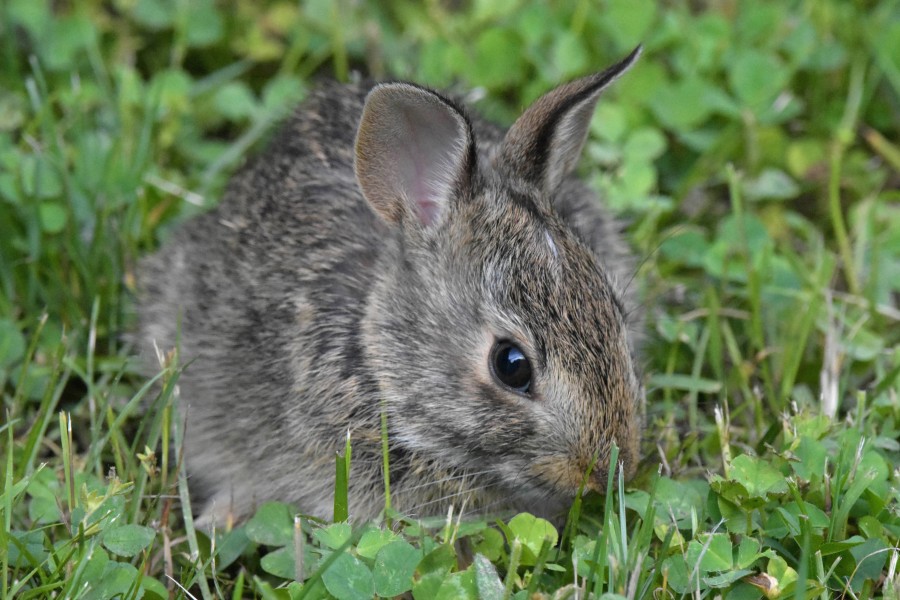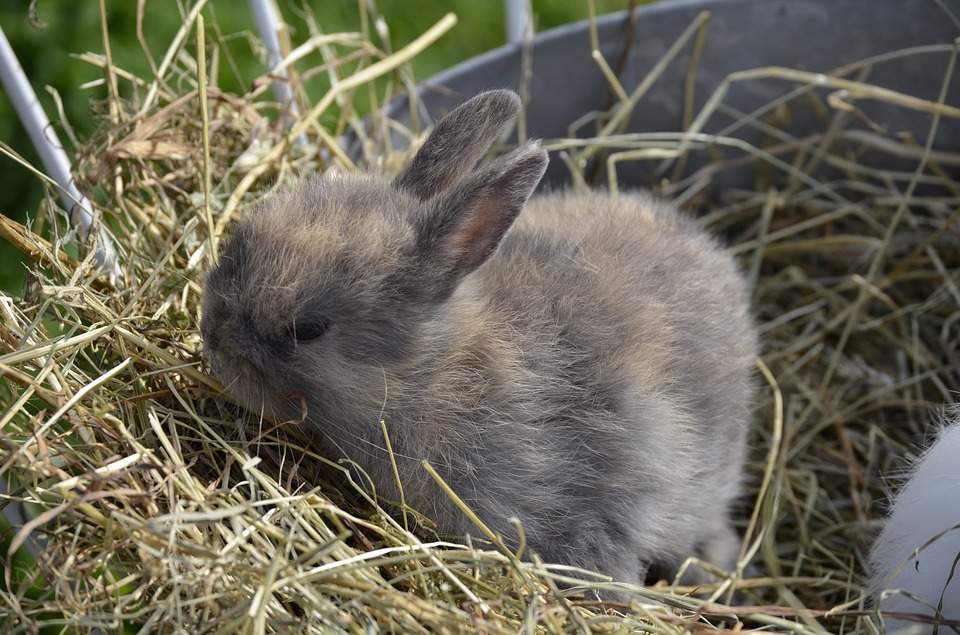This article delves into the intricacies of rabbit pregnancy, providing a comprehensive guide for rabbit owners seeking to understand the gestation period, recognise pregnancy symptoms, and prepare for the arrival of adorable baby bunnies. We'll cover everything from the breeding process to the delivery and the essential care required for both the doe (female rabbit) and her kits.
Part 1: The Basics of Rabbit Reproduction

1.1. Rabbit Anatomy and Physiology:
- Female rabbits, known as does, have a unique reproductive system that allows for rapid cycles.
- They are induced ovulators, meaning ovulation (the release of eggs) is triggered by mating, not by a regular hormonal cycle.
- This unique feature allows does to become pregnant multiple times a year, contributing to their prolific breeding.
1.2. The Breeding Process:
- Male rabbits, called bucks, are typically introduced to a doe for mating, often in a neutral environment to minimise aggression.
- After successful mating, the doe will ovulate within 12 hours, releasing multiple eggs that can be fertilised.
- The number of eggs released varies depending on the doe's age, breed, and overall health.
1.3. Understanding the Gestation Period:
- The gestation period, or the time from conception to birth, for rabbits is approximately 30 to 32 days.
- However, individual rabbits may experience variations, ranging from 28 to 35 days, depending on several factors.
- Factors that can influence gestation duration include breed, age, health, and litter size.
Part 2: Detecting Pregnancy in Rabbits

2.1. Early Signs of Pregnancy:
- Early pregnancy detection in rabbits can be challenging, as physical changes may not be apparent until later stages.
- However, some subtle signs may be noticeable within the first few weeks, such as:
- Slight weight gain
- Increased appetite
- Change in behaviour, including becoming more affectionate or more protective.
2.2. Physical Changes:
- As pregnancy progresses, physical changes become more prominent, including:
- Enlarged abdomen: The doe's abdomen will noticeably expand as the kits (baby rabbits) grow in the uterus.
- Nipple development: The doe's nipples will become larger and pinker, indicating preparation for nursing.
- Weight gain: The doe will experience a significant increase in weight as she carries the kits and prepares for lactation.
2.3. The Importance of Veterinary Examination:
- A veterinary examination is crucial for accurate pregnancy confirmation, particularly during the early stages.
- A veterinarian can palpate the doe's abdomen to feel for the developing kits, listen for fetal heartbeats, and assess her overall health.
- Early veterinary intervention is crucial for identifying and addressing any potential complications.
Part 3: Preparing for Labour and Delivery
3.1. Creating a Safe and Comfortable Nesting Environment:
- The doe's nesting area should be spacious and secure, free from drafts, extreme temperatures, and potential hazards.
- Provide ample bedding material like hay, shredded paper, or soft fabric for the doe to build a nest for her kits.
- Keep the doe's water and food readily available and ensure they are fresh and accessible.
3.2. Labour Signs:
- Restlessness: The doe may become restless and agitated in the days leading up to labour.
- Intensified nest building: She will actively build her nest, collecting materials and arranging them meticulously.
- Panting: Panting may occur as the doe prepares for labour.
- Discharge: A clear or slightly pink discharge may be present as labour approaches.
3.3. Monitoring the Doe During Labour:
- Closely observe the doe during labour, noting any signs of distress or difficulty.
- Typical labour signs include pushing, straining, and vocalisation.
- If you notice any unusual behaviour, such as prolonged pushing, bleeding, or difficulty delivering, contact your veterinarian immediately.
Part 4: Caring for the Doe and Kits Postpartum
4.1. Postpartum Care for the Doe:
- Provide the doe with fresh water and food to help her recover from labour and replenish her energy.
- Continue to provide a safe and comfortable environment for her and her kits.
- Monitor the doe for any signs of infection or complications, such as swollen or red nipples, lethargy, or a loss of appetite.
4.2. Caring for the Kits:
- The doe will typically take care of her kits, nursing them, keeping them warm, and grooming them.
- Avoid disturbing the nest unless absolutely necessary.
- Keep the kits' environment clean and dry.
- Ensure the doe has access to fresh food and water, as she needs extra nutrients to produce milk.
4.3. Weaning the Kits:
- Kits will begin to wean around 4 to 6 weeks of age, depending on breed and individual development.
- Gradually introduce solid food, such as Timothy hay, rabbit pellets, and fresh vegetables, alongside their mother's milk.
- Ensure fresh water is always available.
Part 5: Potential Complications
5.1. Dystocia (Difficult Labour):
- Dystocia can occur when the doe experiences difficulty delivering her kits.
- Causes can include:
- Oversized kits
- Malpositioning of kits
- Complications related to the doe's health, such as uterine infections or weakness.
- Veterinary intervention is often required in cases of dystocia to assist the doe in delivering her kits safely.
5.2. Mastitis (Infection of the Mammary Glands):
- Mastitis occurs when the doe's mammary glands become infected.
- Symptoms include:
- Swollen, red, and painful nipples
- Lethargy
- Loss of appetite
- Veterinary treatment is essential to manage mastitis and prevent further complications.
5.3. Other Complications:
- Other potential complications during pregnancy and labour include:
- Stillbirth: Sadly, stillbirth can occur, especially in cases of dystocia or health issues.
- Uterine infections: Infections can occur after labour, particularly if the doe experiences complications.
- Health issues in the kits: Kits may be born with health problems, such as weakness, malformations, or congenital diseases.
- Regular veterinary check-ups and monitoring are crucial to identify and address any complications promptly.
Part 6: FAQs
6.1. How Often Do Rabbits Give Birth?
- Rabbits are capable of becoming pregnant every 30 to 32 days after giving birth, as their bodies quickly cycle through pregnancy and nursing.
- It's important to control breeding to avoid overpopulation, protect the doe's health, and ensure that the kits are adequately cared for.
6.2. Can I Touch the Kits?
- It's best to avoid touching the kits for the first few weeks of life.
- The doe's scent is crucial for her to recognise and care for her young.
- If you must handle the kits, wash your hands thoroughly before and after to avoid transferring any harmful bacteria.
6.3. When Can I Separate the Kits from the Doe?
- Kits should be weaned around 4 to 6 weeks of age, when they are able to eat solid food and no longer rely solely on their mother's milk.
- At this point, they can be separated from the doe and introduced to their own cages.
- Ensure that the kits' new cages are spacious, provide appropriate food and water, and have a safe and comfortable environment.
6.4. How Many Kits Do Rabbits Usually Have?
- The average litter size for rabbits is 4 to 8 kits, but it can vary depending on the breed and the doe's health.
- Some breeds are known to have larger litters than others.
6.5. What Should I Do if My Doe Has Difficulty Giving Birth?
- Contact your veterinarian immediately if the doe exhibits signs of distress during labour.
- Veterinary intervention may be necessary to assist the doe in delivering her kits safely.
6.6. What Should I Feed My Pregnant Doe?
- Provide a balanced diet that includes Timothy hay (the foundation of a healthy rabbit diet), rabbit pellets, and fresh vegetables, such as leafy greens, bell peppers, and carrots.
- Avoid giving your doe sugary treats or processed foods.
- Offer plenty of fresh water to stay hydrated.
- Consult your veterinarian for specific dietary recommendations for your doe based on her breed and health.
6.7. How Do I Know if My Doe Is Having a Stillbirth?
- Stillbirth is sadly possible in rabbits, and it's often difficult to detect without a veterinary examination.
- If you suspect a stillbirth, contact your veterinarian for advice and guidance.
Part 7: Tips for Success
- Regular veterinary check-ups are crucial for both the doe and her kits. A veterinarian can monitor their health, address any concerns, and provide guidance on pregnancy care.
- Proper nutrition is vital during pregnancy and lactation. Ensure the doe has access to a balanced diet with ample Timothy hay, rabbit pellets, and fresh vegetables.
- Create a safe and comfortable environment for the doe and her kits. Protect them from drafts, extreme temperatures, and potential hazards.
- Monitor the doe closely during labour and postpartum. Early intervention can make a significant difference in preventing complications.
- If you have any concerns, consult your veterinarian immediately. They are your best resource for providing expert advice and guidance on rabbit pregnancy care.
Everyone is watching
-

Do Rabbits Lay Eggs? (The Surprising Truth)
OTHER TYPES OF PETSThis article will unravel the common misconception that rabbits lay eggs, exploring the fascinating world of r...
-

Can Rabbits Eat Grapes? A Guide to Safe Rabbit Treats
OTHER TYPES OF PETSThis comprehensive guide will explore the safety and suitability of grapes for rabbits, providing detailed inf...
-

What's a Group of Rabbits Called? (A Comprehensive Guide)
OTHER TYPES OF PETSThis article delves into the fascinating world of rabbits, exploring the various terms used to describe a grou...
-

Predators That Hunt Rabbits: A Guide to Natural Enemies
OTHER TYPES OF PETSI've always been fascinated by the circle of life, that delicate dance between predator and prey. Growing up ...
-

Are Rabbits Nocturnal Animals?
OTHER TYPES OF PETSThe question of whether rabbits are nocturnal animals is a fascinating one, with a surprisingly complex answer...
